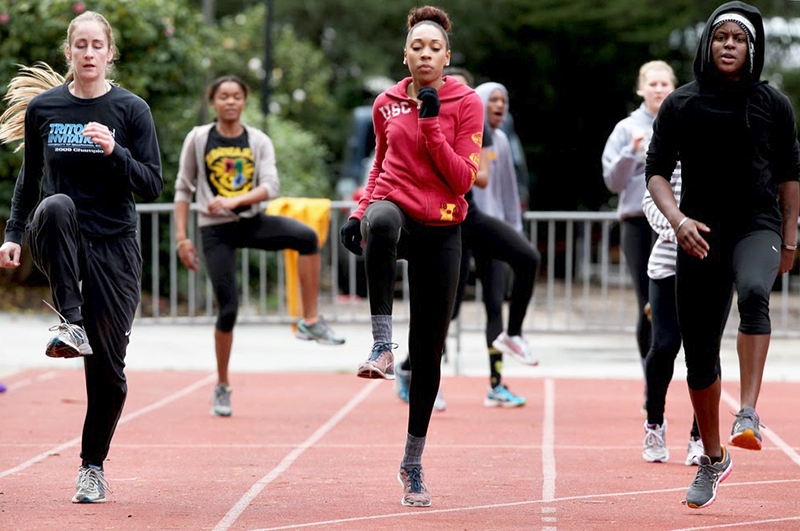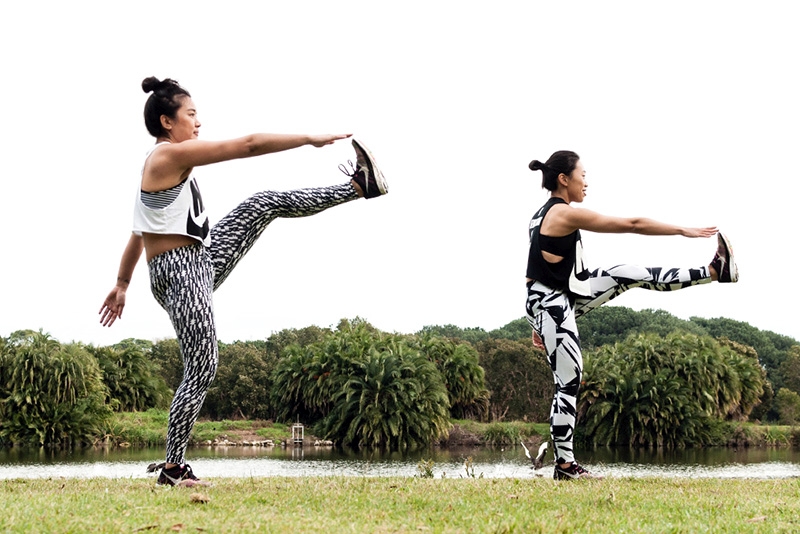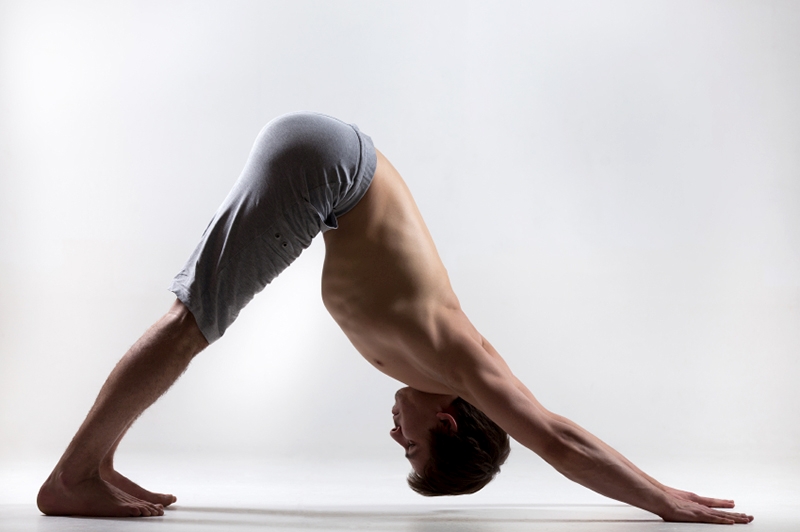You are viewing 1 of your 1 free articles. For unlimited access take a risk-free trial
Endurance performance: the anatomy of a perfect warm up (part two)
In the first part of this article, we looked at the evidence for and against including different types of stretching in a pre-exercise warm up. In this, we look the science of assembling the most important component of a warm up - the actual warm up!
In the first part of this article, we looked at the evidence for and against including different types of stretching in a pre-exercise warm up. In this, we look the science of assembling the most important component of a warm up - the actual warm up!
Unlike warm-up stretching, which needs to be targeted and specific to provide benefits, there’s no doubt that the warm up pulse raiser does produce significant performance benefits – indeed it’s what a warm up is really all about. What’s less well understood is the optimum intensity and duration of any exercise during the warm up – ie how hard and how long to warm up for the best subsequent performance.
The conventional approach is to perform 5-15 minutes of gentle aerobic exercise performed at around 55-60% of your maximum heart rate (your max heart rate is approximately [220 – your age]) with perhaps longer duration pulse raisers before particularly intense sessions. The logic is that a warm-up is considered to be just that; a short and fairly gentle routine to warm up the muscles, prepare them for the strenuous work to come without the risk of fatigue, while at the same time reducing the risk of injury.
How hard?
Although the approach outlined above makes sense, there’s evidence that a more intense period of pulse raising could be even more beneficial. We already know that high-intensity exercise performed prior to a second bout of exercise increases the energy contribution coming from oxidation of fuels in that second bout of exercise. This is because the prior bout of exercise enhances ‘oxygen kinetics’ – the ability of the blood (which carries oxygen) to flow around working muscles. The obvious question therefore is whether a high-intensity pulse raiser in a warm up is better for subsequent performance than a standard pulse raiser. A very recent study compared two types of warm up in eleven highly-trained middle-distance runners to see how they affected subsequent competitive performance during an 800-metre race(1):
- Standard warm up – consisting of a 10-minute self-paced jog and standardised mobility drills, followed by six sets of 50-metre strides;
- High-intensity warm up – consisting of a 10-minute self-paced jog and standardised mobility drills, two sets of 50-metre strides and then a continuous high-intensity 200-metre run performed at race pace.
The most striking finding was that when the high-intensity warm up was performed, the 800-metre time trial performance was significantly faster (124.5 seconds vs. 125.7 seconds for high and standard intensities respectively – see figures 1 & 2). There were also differences in oxygen consumption after the two different warm ups; when the runners performed the high-intensity warm up, they consumed a total of 119mls of oxygen per kilo of bodyweight with a peak consumption rate of 4.21 litres per minute. In the standard warm up however, the figures were 109mls/kg and a peak of just 3.91 litres per minute. The likely explanation for these results is that because the runners’ muscles were better ‘primed’ with blood (and oxygen) flow after a high-intensity warm up, they derived a greater proportion of their energy in the race from aerobic metabolism, which in turn meant a reduced reliance on the lactate system for energy and a subsequent accumulation of fatiguing lactate.
Figure 1: Oxygen consumption amounts for high (green bar) vs. standard intensity (blue bar) warm up

Higher oxygen consumption during 800m race following high-intensity warm up occurred as a result of better pre-race blood flow to muscles
Figure 2: 800m race times for high (green bar) vs. standard intensity (blue bar) warm up

Faster 800m times following high-intensity warm up probably occurred as a result of reduced lactate accumulation due higher oxygen availability.
Too much of a good thing?
Although some high-intensity work in a warm up seems beneficial, you need to be careful you don’t overdo it as there’s also evidence that too much may be counterproductive. For example, a Canadian study on cyclists compared two warm up protocols on subsequent performance(2):
- Twenty minutes of cycling with a gradual intensity increase from 60% to 95% of maximal heart rate then four sprints were performed at 8-minute intervals
- Fifteen minutes of cycling with a gradual increase from 60% to 70% of maximal heart rate then just one sprint
In the incremental cycling test that followed, the 1-sprint warm up resulted in higher power outputs and greater work performed. The researchers concluded that high amounts of work in the 4-sprint warm up had improved oxygen kinetics but unfortunately had also caused fatigue too.
Another study on cyclists looked at the effects of moderate, heavy and severe warm-up protocols on all-out 30-second sprint performance, muscle oxygenation and metabolism in eight trained male cyclists(3). The severe protocol produced the best pre-sprinting blood and oxygen flow to the muscles; unfortunately however, it resulted in slower times and reduced power outputs in the 30-second sprint. The researchers concluded that while the severe warm up benefitted oxygenation and aerobic performance, it reduced the capacity of the cyclists’ anaerobic systems, which was then detrimental to their sprint performance.
Duration
Something else that needs to be considered is warm up duration. Too long a warm up, even when intensity is not extremely high, could be detrimental by creating excessive muscular fatigue. A good illustration of this can be seen in a study published on rowers(4). The traditional warm-up procedure in rowing usually involves continuous, low-intensity rowing lasting up to 60 minutes (yes, a long time!) interspersed with shorter, intense bursts. In this study, 14 trained rowers performed an all-out 10-minute rowing time trial using two types of warm up:
- One hour of the ‘traditional’ rowing warm-up
- As above but with the duration reduced by 50% - ie lasting only 30 minutes
The results showed that the shorter duration warm up produced better performance. The rowers’ average power output was higher and they generated substantially more power in the initial 7.5 minutes of the time trial. After the long-duration warm up, the rowers not only performed worse in the time trial, they also felt more tired and had higher levels of (fatiguing) lactate in the bloodstream.
Summary
Okay, there’s quite a lot to digest here so let’s just summarise. As far as pre-exercise stretching goes, dynamic stretching may offer some benefit but that’s the only type of warm up stretching you should consider. For the actual warm up, it needs to be long enough to properly raise core temperature but not overly long as this may simply create unnecessary fatigue. It should also contain some limited high-intensity race-pace work to maximise blood flow to muscles but this should be kept short (less than 2 minutes) again to avoid undue fatigue. The box below gives some practical tips for your perfect warm up!
Practical tips for warming up
- The faster and shorter your event, the more important a warm up becomes. For example, warming up for a 10K cycling time trial therefore is important; warming for a long training ride is less so where simply starting off gently for the first 10-15 minutes will usually suffice.
- Forget static or ballistic stretching; perform 3-4 minutes of dynamic stretches such as jogging on the spot, high-knee skips, arm swings, jumping jacks, heel-to-buttock kicks, gentle rope skipping or quick lunges. Cyclists can also lie on the back and perform moderately paced, pedaling movements.
- In the first part of the warm up proper, start gently and gradually increase your effort until you’re working at around 70% of your maximum heart rate. Be specific and expose your muscles to the movements they’re about to perform. For example, if your a cyclists, stand on the pedals if you will be doing so during your race. Crouch and lean if you will be using those movements. Hill runners should incorporate high knee-lift exercise etc.
- After 10 minutes or so, perform a high-intensity burst at your full race pace for up to two minutes (but no longer). Try to do this within 5 minutes of the start of your event.
- Runners can easily warm up anywhere. Cyclist warming up for a race or time trial should see whether stationary bikes are available for warming up. If not, check out the local area to see which route(s) might be suitable for warming up on your bike.
References
- Int J Sports Physiol Perform. 2013 Jan;8(1):77-83
- J Appl Physiol. 2011 Jul;111(1):228-35
- Eur J Appl Physiol. 2012 Aug;112(8):3129-39
- Int J Sports Physiol Perform. 2012 Jun;7(2):186-8
Newsletter Sign Up
Testimonials
Dr. Alexandra Fandetti-Robin, Back & Body Chiropractic
Elspeth Cowell MSCh DpodM SRCh HCPC reg
William Hunter, Nuffield Health
Newsletter Sign Up
Coaches Testimonials
Dr. Alexandra Fandetti-Robin, Back & Body Chiropractic
Elspeth Cowell MSCh DpodM SRCh HCPC reg
William Hunter, Nuffield Health
Keep up with latest sports science research and apply it to maximize performance
Today you have the chance to join a group of athletes, and sports coaches/trainers who all have something special in common...
They use the latest research to improve performance for themselves and their clients - both athletes and sports teams - with help from global specialists in the fields of sports science, sports medicine and sports psychology.
They do this by reading Sports Performance Bulletin, an easy-to-digest but serious-minded journal dedicated to high performance sports. SPB offers a wealth of information and insight into the latest research, in an easily-accessible and understood format, along with a wealth of practical recommendations.
*includes 3 coaching manuals
Get Inspired
All the latest techniques and approaches
Sports Performance Bulletin helps dedicated endurance athletes improve their performance. Sense-checking the latest sports science research, and sourcing evidence and case studies to support findings, Sports Performance Bulletin turns proven insights into easily digestible practical advice. Supporting athletes, coaches and professionals who wish to ensure their guidance and programmes are kept right up to date and based on credible science.













